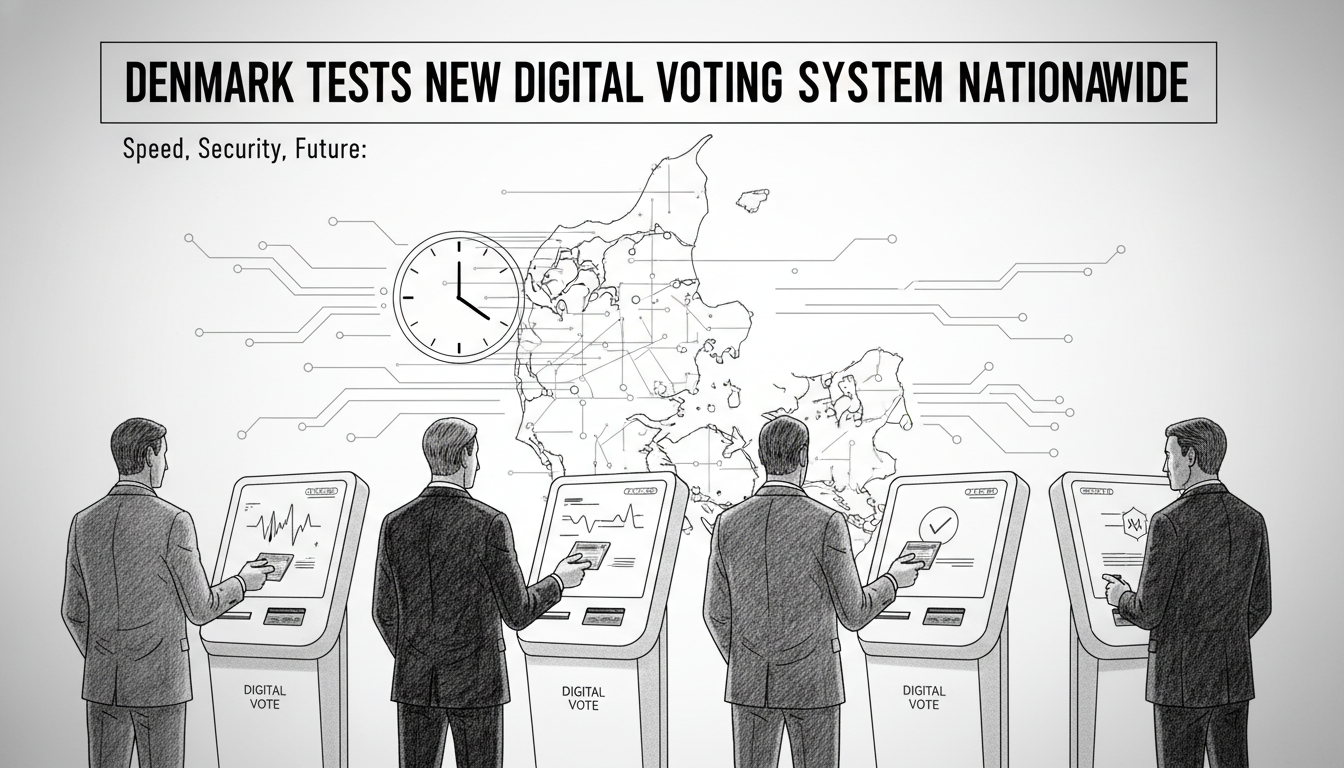Danish municipalities are rolling out a completely new digital voting system today. This marks the first major overhaul of election infrastructure in over three decades. The system replaces paper-based voter logs with digital scanning technology.
Voters no longer need to find specific numbered voting tables matching their registration. They can now choose any available voting station. This change aims to reduce waiting times and streamline the voting process.
Peter Vallentin, a chief legal officer and election manager in Herning Municipality, explained the practical benefits. If one voting table has no queue, voters can simply go there. Their voting card gets scanned immediately. They receive their ballot papers and proceed directly to the voting booth.
The system was developed by technology company Kombit. It has been installed across all of Denmark's municipalities after extensive testing. Company CEO Kristian Vengsgaard expressed confidence in the preparation while acknowledging natural concerns. He noted everything appears ready on multiple fronts but admitted to feeling nervous about potential issues.
Security considerations drove the system's design from the beginning. Developers recognized the digital landscape has changed dramatically since the previous system was created 30-40 years ago. They prioritized building the most secure system possible given current technological threats.
At Viborg's Stadion Hallerne, Denmark's largest voting venue, officials anticipate improvements. Administrative leader Peter Vestergaard said digital scanning should make voting faster for citizens. However, vote counting remains manual for now. While results will be submitted digitally rather than by phone, this may not necessarily deliver faster election outcomes.
This modernization reflects Denmark's ongoing digital transformation across public services. The country has been gradually updating legacy systems that date back to the pre-internet era. Similar upgrades have occurred in healthcare, taxation, and education systems in recent years.
International observers often point to Denmark's high trust in digital solutions. The country consistently ranks among nations with the highest levels of digital government service adoption. This voting system update aligns with that broader trend toward digital public infrastructure.
The transition represents a significant operational challenge. Election officials must ensure both technological reliability and public confidence. While digital systems promise efficiency, they also introduce new vulnerabilities that weren't present in the purely physical system they replace.
Danish elections typically see high voter participation rates. The success of this new system could influence similar modernizations in other Nordic countries. Norway and Sweden have been watching Denmark's digital election developments closely as they consider their own system updates.
The true test will come when millions of Danish voters use the system during actual elections. Today's nationwide testing provides the first real-world assessment of whether the digital transition delivers on its promises of both security and efficiency.

